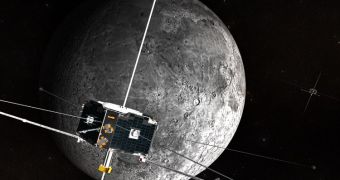Officials at the American space agency announce that the second ARTEMIS spacecraft managed to insert itself into lunar orbit, after a prolonged trip through space. The probes were originally a part of a mission to study Earth.
At one point, experts decided that there is no reason to let the five-satellite constellation go to waste once the mission was completed. Therefore, they decided to put two of the spacecraft on a course that was to take them to the Moon.
The issue what that was that the two had no more fuel left to allow for a direct lunar orbit injection trajectory. As such, orbital engineers had to take the scenic route in a trip that lasted more than one and a half years.
The ARTEMIS probes left our planet's orbit in July 2009, and the first one reached the Moon on June 27, 2011. The second one followed suit a few weeks later, on July 17. Both are now beginning to conduct scientific observations over the lunar surface.
ARTEMIS stands for Acceleration, Reconnection, Turbulence and Electrodynamics of the Moon's Interaction with the Sun. The prolonged mission is derived from the NASA THEMIS (Time History of Events and Macroscale Interactions during Substorms) constellation.
The latter's goal was to study the events that took place in Earth's magnetosphere as solar particles slammed into this protective layer. Now, two of the five THEMIS spacecraft are being used to study the interior and surface composition of the Moon.
“This is a good example of how additional science can be achieved with the innovative use of existing spacecraft,” explains the director of Heliophysics Department at the NASA Science Mission Directorate (SMD), Dick Fisher.
“The quality of the original design and construction of the spacecraft creates a double win: a new research opportunity for the space science community with no additional cost to the nation's taxpayers,” the official goes on to say,.
“From their new orbits about the moon, ARTEMIS will collect important data about the moon's core, its surface composition, and whether it contains pockets of magnetism,” scientist Dave Sibeck says.
“ARTEMIS also will provide information needed to understand the moon's magnetic environment in space and its relationship to events near Earth,” the expert adds.
He holds an appointment as a ARTEMIS and THEMIS project scientist at the NASA Goddard Space Flight Center (GSFC), in Greenbelt, Maryland, SpaceRef reports.

 14 DAY TRIAL //
14 DAY TRIAL //